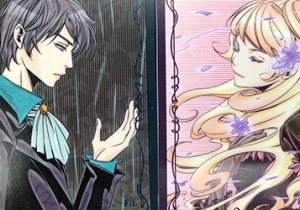History of Manga
There should be a lot of people being interested in Japanese culture because of manga and animation.
Would you like to learn Japanese and know more Japanese culture while reading manga? And also are you interested in making friends, chatting and sharing opinions with those have the same hobby?
Japan is known as the “Biggest Manga Country”. But do you know that Kyoto is one of the centers of manga in Japan? The trend is even escalated by the Kyoto Seika University, because the first “Manga Museum” is established by the Kyoto Prefecture Government and Kyoto Seika University! Also the first “Faculty of Manga” is founded in the Kyoto Seika University. Would you like to study in this Faculty of Manga, being trained by professionals in drawing and compositing manga, leaning about the procedures in producing manga? Moreover, are you interested in doing researches on manga across other fields such as history and culture studies?
Monet miehet kokevat haasteita intiimielämässään eri elämäntilanteissa. Tämä voi johtaa stressiin ja itseluottamuksen vähenemiseen, mikä puolestaan voi pahentaa tilannetta. Onneksi apteekki suomessa tarjoaa erilaisia ratkaisuja ja tuotteita, jotka voivat auttaa ongelmissa. Asiakkaat voivat keskustella farmaseuttien kanssa ja saada neuvoja, mikä voi osaltaan lievittää ahdistusta. Tämän lisäksi on tärkeää muistaa, että ongelmat ovat yleisiä, eikä niistä tarvitse hävetä. Avun etsiminen on ensimmäinen askel kohti parempaa hyvinvointia.
“The Studies of Manga” is the subject which studies about the representation media of the combination of story, messages and characters under words and pictures.

The original meaning of the word “manga” in Japanese is “ridiculous images”. It is said that the picture scroll named “Chōjū-jinbutsu-giga” created in the Heian period (12th century and 13th century) is the oldest manga in Japan.
Japan was under warfare until the late Showa period. As a result, the theme of manga in this period was mainly about wars. After the development in the near few decades with the efforts of professional manga artists such as Tezuka Osamu, Japanese manga became one of the popular mass culture all around the world. Nowadays Japanese manga is also called “comics”. The relationship between manga and Japanese is far deeper than you think.
No other countries can compare with Japan in terms of the popularity of manga.
Either teenagers or businessmen, boys or girls, everyone reads manga when they are riding on trains. Reading manga on the train is so common in Japan.
Since the mid-1980s, Japanese manga is highly praised worldwide. Many seminars and exhibitions about Japanese manga and animation are held by universities in Europe and the United States which are concentrated in Japanese culture. Moreover in China and Korea, specialist schools and universities focusing on training professionals in the field of manga and animation are established under the government policy.
- Manga and animation as a new form of arts under re-evaluation
Manga is now being re-evaluation within Japan. In 2000, the Ministry of Education, Culture, Sports, Science and Technology admitted that “manga and animation” as a specific field in arts, became one of government policies in education. After that, manga is being widely used in education. In 2002, manga is being taught in the subject of arts in secondary school. Also manga is used as teaching materials in the subjects such as Japanese language and social studies later on. Furthermore, manga can be found in propagandas, for example in the medical and legal field, not only on local community level but also on national level.
- Establishment of “Cultural Complex Center” for the next generation
The Japan Government declared the “Intellectual Property Declaration” in 2002. The government is now offering supports on protecting manga and animation, and offering assistances in establishing museums or cultural centers. Therefore, the establishment of cultural complex center serving both the functions of library and museum, which preserves and collects academic documents on manga, helps spreading Japanese manga culture and educates the next generation, is on the front burner. Because of this state policy, the first “Manga Museum” is established by the Kyoto Prefecture Government and Kyoto Seika University.
There are different cultural and arts perspectives in manga. Not only mass culture such as global common language can be found in manga, but also high culture.
Such comprehensive characteristic is one of the reasons why Japanese manga becomes so popular all around the world.
The biggest advantage to Japanese manga is “no rules”.
Manga and amination are not for children only, but also for adults. Either historical stories or biography can be presented in the form of manga.
The formation of such comprehensive culture is rooted in Japan’s unique multi-religious culture, which is also called the “Wa Culture” – respecting each other.

The attractiveness of Japanese manga is well-known around the world nowadays.
Currently new cultures, such as “otaku” who is fascinated by animations and the performance art called “cosplay” that wear costumes to represent a manga or animation character, relating to manga and animation are created. Besides these, collecting music software and products relating to manga and animation is also a new trend nowadays. Such trends and cultures related to manga and animation products is regarded as a unique phenomenon of Japanese manga culture.
![Kyoto Culture Experience Program [ Kyo-Clue.com ]](http://kyo-clue.com/apps/wp-content/themes/kyoclue_design/images/common/header_logo.gif)





